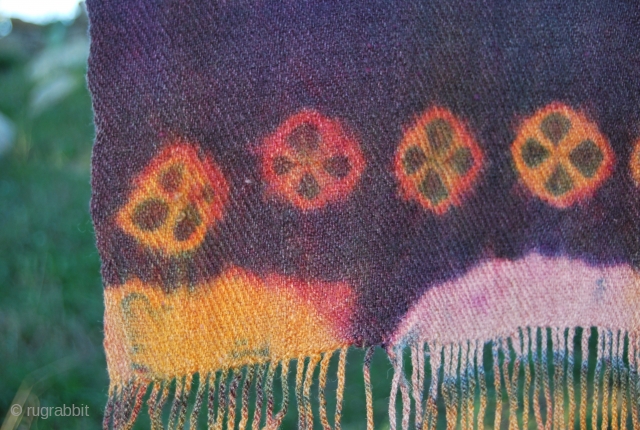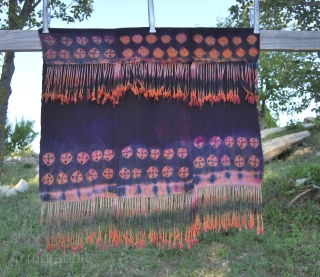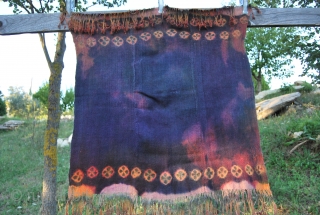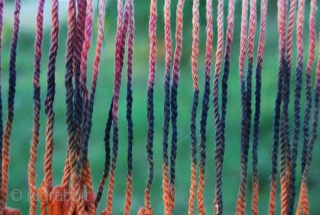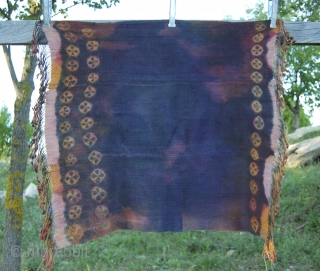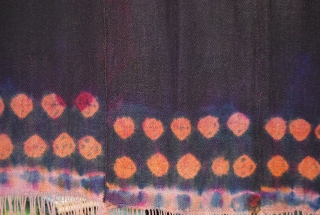Back
Two Tibetan yak wool tie & dye shawls from Southern Tibet and/or Zanskar.
Yak wool, natural colors, approx age is early 20th century. Cm 85x75 ca. each.
In Tibet the Tigma or cross in circle pattern is a motif related to shamanistic tradition deriving from pre Buddhist Bon cults and was often created on woolen textiles using the tie-dye method. The Tigma is similar to the Buddhist Swastika, a good-luck symbol and is conducive to well-being.
p.s. ....a scholar wrote to me correcting some infos: Not from Tibet, but from Zangskar, not yak, but sheep wool, not early, but most probably mid 20th century, purple and yellow might be synthetic. That's his opinion, thank you.
price:
sold to a collector in Australia
- Home
- Antique Rugs by Region
- Category
- Profiles
- Post Items Free
- Albums
- Benaki Museum of Islamic Art
- Budapest: Ottoman Carpets
- Gulbenkian Museum
- Islamic Carpets. Brooklyn
- Islamic Textiles. Brooklyn
- Konya Museum: Rugs
- MKG, Hamburg
- MMA: Caucasian Carpets
- MMA: Mamluk Carpets
- MMA: Mughal Indian Carpets
- MMA: Ottoman Carpets
- MMA: Safavid Persian Carpets
- MMA: Turkmen Rugs
- McCoy Jones Kilims
- Ottoman textiles. Met
- Philadelphia Museum
- Rugs and Carpets: Berlin
- Seljuqs at the Met
- TIEM, Istanbul: Carpets
- V&A: Classical Carpets
- Vakiflar Carpets: Istanbul
- Baluch Rugs: Indianapolis
- Gallery Exhibitions
- Jaf an Exhibition
- Alberto Levi Gallery
- Andean Textile
- Christie's London: 2016
- Francesca Galloway
- HALI at 40
- ICOC Washington, DC 2018
- Jajims of the Shahsavan
- London Islamic Week April, 2018
- Mongolian Felts
- Navajo Rugs: JB Moore
- Persian Piled Weavings
- SF Tribal & Textile Art Show 2020
- SF Tribal 2019
- Sotheby's: C. Alexander
- Turkish Prayer Rugs
- Turkmen Main Carpets ICOC 2007








